Attention-Deficit/Hyperactivity Disorder (ADHD) is a neurological condition that affects millions of people, making it challenging to maintain focus, regulate emotions, and control impulsive behaviors. ADHD can impact a person’s ability to succeed in school, work, and relationships. While medication and therapy remain the foundation of treatment, exercise is increasingly recognized as a powerful complementary tool for managing ADHD symptoms.
At Foundations Group Behavioral Health, we understand that treating ADHD requires a holistic approach, incorporating various treatment modalities such as Psychiatric Day Treatment, Outpatient Mental Health Programs, and targeted therapies like Trauma Disorder Treatment Programs. Along with these, regular physical exercise can be an effective strategy to help reduce the severity of ADHD symptoms. Below, we explore six exercises that can be particularly beneficial for individuals with ADHD, focusing on how they improve focus, impulse control, and overall mental well-being.
1. Aerobic Exercise: Improving Attention and Reducing Hyperactivity
Aerobic exercises such as running, cycling, or swimming are excellent ways to boost cardiovascular health and enhance cognitive function. Studies suggest that aerobic activity increases blood flow to the brain, stimulates the release of neurotransmitters like dopamine and norepinephrine, and helps to balance mood. These chemical changes in the brain can help improve attention, reduce hyperactivity, and increase mental clarity.
How it helps ADHD: Aerobic exercises help stimulate brain activity, which is vital for increasing attention span and reducing impulsive behaviors. Regular aerobic activity can help individuals with ADHD focus more effectively in both their personal and professional lives.
How to incorporate it: Aiming for at least 30 minutes of aerobic exercise most days of the week is ideal. Activities such as brisk walking, cycling, or swimming are great options. For beginners, start with a moderate walk for 15 minutes and gradually build stamina over time.
2. Strength Training: Enhancing Emotional Regulation and Focus
Strength training is another form of exercise that has significant benefits for people with ADHD. Weight lifting, resistance training, and bodyweight exercises (e.g., squats, lunges, push-ups) all require mental concentration and focus, which can help improve self-discipline. Additionally, strength training increases the production of dopamine, a neurotransmitter that is often low in individuals with ADHD, which can enhance mood and attention.
How it helps ADHD: Strength training promotes mental clarity, which can help individuals with ADHD concentrate better. It also encourages emotional regulation by providing a structured outlet for energy, reducing impulsive tendencies and promoting a sense of accomplishment.
How to incorporate it: You can begin with light weights or bodyweight exercises, aiming for 15-30 minutes per session. If you’re new to strength training, consider consulting with a trainer to create a beginner-friendly routine that’s manageable and effective.
3. Yoga: Boosting Mindfulness and Relaxation
Yoga is a gentle but powerful exercise that has been shown to improve focus, flexibility, and emotional regulation. By integrating deep breathing, stretching, and mindfulness, yoga helps calm the nervous system and promote relaxation. For individuals with ADHD, yoga can help regulate both the body and mind, improving the ability to concentrate and manage stress.
How it helps ADHD: The mindfulness aspect of yoga can help individuals with ADHD become more aware of their thoughts and behaviors, promoting a greater sense of focus and control. Yoga also reduces symptoms of anxiety and depression, which are often co-occurring disorders with ADHD.
How to incorporate it: A short 10-15 minute yoga session is a great starting point, with sessions gradually increasing as comfort and flexibility improve. Look for beginner yoga classes or online videos specifically tailored to ADHD. Focusing on gentle stretches and mindful breathing can have a calming effect.
4. Tai Chi: Enhancing Focus and Emotional Stability
Tai Chi, a form of martial art that emphasizes slow, controlled movements combined with deep breathing, has been shown to improve concentration, reduce anxiety, and foster emotional regulation. The practice of Tai Chi encourages greater body awareness and mindfulness, making it particularly beneficial for individuals with ADHD who may struggle with restlessness or hyperactivity.
How it helps ADHD: Tai Chi’s slow movements require sustained focus, which helps to reduce mental distractions and improve concentration. Additionally, its calming effect helps to reduce stress and anxiety, often exacerbating ADHD symptoms.
How to incorporate it: Tai Chi can be practiced as a meditative exercise. Try to commit to a session lasting 20-30 minutes, either in a class setting or by following instructional videos at home. As you become more familiar with the movements, aim to increase the duration of your practice.
5. Dance: Boosting Mood and Coordination
Dancing is a fun and highly effective way to release pent-up energy and improve coordination. Whether it’s a structured dance class or freestyle dancing at home, dancing offers a high-energy outlet for individuals with ADHD to channel their energy in a positive way. Additionally, dancing improves cognitive function, balance, and mental clarity, all while boosting mood.
How it helps ADHD: Dance requires focus and rhythm, helping individuals practice coordination, motor control, and concentration. It also provides an emotional outlet and can elevate mood through the release of endorphins.
How to incorporate it: Put on your favorite music and dance for 15-30 minutes. You can take a dance class, follow along with an online routine, or simply enjoy dancing freely at home. Dance regularly to help stay energized and boost mental clarity.
6. Mindful Walking: Grounding and Focusing
Mindful walking, or walking with a heightened awareness of the body, breath, and surroundings, can be a powerful way to reduce restlessness and improve focus for those with ADHD. This exercise combines gentle physical activity with mindfulness techniques, encouraging the individual to stay present and focused.
How it helps ADHD: Mindful walking helps reduce anxiety and impulsivity, which are often present in ADHD. It encourages mindfulness and awareness, promoting greater emotional control and focus. By connecting with the present moment, individuals with ADHD can ease their racing thoughts and increase concentration.
How to incorporate it: Try walking for 10-15 minutes in a quiet place, such as a park or around your neighborhood. Focus on your breath and the sensation of each step. Make it a daily habit to support relaxation and mental clarity.

The Science Behind Exercise and ADHD
Exercise is not only beneficial for physical health but also plays a crucial role in managing ADHD symptoms. Research shows that physical activity triggers the release of neurotransmitters like dopamine and norepinephrine, which are often at lower levels in individuals with ADHD. These neurotransmitters are essential for regulating attention, focus, and impulse control. Regular physical activity can help increase these levels, leading to improved cognitive function and emotional regulation.
Moreover, exercise promotes brain plasticity, which refers to the brain’s ability to adapt and form new connections. This is particularly beneficial for people with ADHD, as it can help improve their ability to process information, concentrate for extended periods, and reduce impulsive behaviors. Studies have shown that even short bursts of exercise can activate the brain’s prefrontal cortex—the area responsible for executive functions like attention, decision-making, and impulse control—leading to improved focus and cognitive performance.
How These Exercises Fit into a Comprehensive ADHD Treatment Plan
These exercises can complement a variety of ADHD Treatment Programs at Foundations Group Behavioral Health, including our Psychiatric Day Treatment and Outpatient Mental Health Programs. Incorporating exercise into an overall treatment plan enhances the effectiveness of therapies, including Anxiety Treatment Programs, Depressive Disorder Treatment Programs, and Personality Disorder Treatment Programs. In addition to traditional therapies and medications, exercise provides a holistic approach that addresses both the mind and body, helping individuals with ADHD better manage their symptoms.
Our treatment programs for Co-Occurring Disorder Treatment Programs focus on the unique needs of individuals who may experience ADHD alongside other mental health conditions, such as depression, anxiety, or trauma. By integrating physical activity, individuals can foster better mental and physical health, improving their ability to manage the complexities of ADHD.
Benefits of Regular Exercise for ADHD
Regular exercise offers a wide range of benefits for individuals managing ADHD. Here are some key advantages:
- Improved Focus and Concentration: Aerobic activities like running, cycling, or swimming can enhance attention span by increasing blood flow to the brain, which helps sharpen focus. This is especially important for individuals with ADHD, who often struggle with staying on task.
- Reduced Hyperactivity and Restlessness: Physical activity allows individuals with ADHD to channel excess energy in a positive way. This can lead to a reduction in hyperactivity, making it easier for them to sit still or engage in more focused tasks.
- Enhanced Emotional Regulation: Regular exercise helps in the regulation of mood by reducing stress hormones like cortisol and increasing feel-good endorphins. This can help individuals with ADHD manage emotional outbursts and impulsivity more effectively.
- Increased Self-Esteem and Confidence: Achieving fitness goals or mastering a physical skill can boost self-esteem. When individuals with ADHD experience success in exercise, it can also transfer to other areas of their life, enhancing overall confidence and motivation.
- Better Sleep: Many individuals with ADHD experience sleep disturbances, but physical activity can improve sleep quality by helping to regulate the body’s circadian rhythm. Better sleep, in turn, can improve focus and mental clarity during the day.
Mindfulness and ADHD: Combining Exercise with Focus Practices
Combining exercise with mindfulness practices, such as yoga or tai chi, can be particularly effective for managing ADHD. Mindfulness encourages awareness and control over thoughts and emotions, while exercise helps reduce restlessness and increases mental clarity. Together, they can enhance focus and emotional regulation.
Yoga, for instance, involves controlled breathing, stretching, and poses that not only build strength and flexibility but also promote a calm, focused mind. This is especially helpful for ADHD, as it teaches individuals to be present in the moment, reducing distractions and increasing attention. Research has shown that yoga can help ADHD patients improve their ability to focus, lower stress levels, and enhance emotional regulation.
Similarly, tai chi, a gentle form of martial arts that focuses on slow, deliberate movements, can improve both physical and mental balance. The mindful movements involved in tai chi help ADHD individuals cultivate concentration and reduce anxiety, making it a powerful practice for managing symptoms.
Exercise and Diet: Enhancing ADHD Treatment
While exercise plays a significant role in managing ADHD, its benefits can be further amplified when paired with a balanced diet. Proper nutrition is essential for brain health, and certain foods can help optimize the benefits of physical activity. A diet rich in protein, omega-3 fatty acids, and whole grains can support cognitive function and mood regulation, which is especially important for individuals with ADHD.
- Protein: Foods like lean meats, eggs, legumes, and nuts are rich in protein, which helps regulate blood sugar levels and provides steady energy throughout the day. Protein also supports the production of dopamine and norepinephrine, the neurotransmitters involved in attention and focus.
- Omega-3 Fatty Acids: Found in fatty fish (like salmon), walnuts, and flaxseeds, omega-3 fatty acids are essential for brain function. Studies suggest that omega-3s can help improve attention and reduce hyperactivity in individuals with ADHD.
- Complex Carbohydrates: Whole grains, vegetables, and fruits provide a slow-release source of energy. They help stabilize blood sugar levels and avoid the energy crashes that can exacerbate ADHD symptoms.
Seek Additional Help at Foundations Group Behavioral Health
At Foundations Group Behavioral Health, we understand that managing mental health conditions like ADHD, anxiety, depression, and trauma can be a complex and ongoing process. While exercise, therapy, and medication can significantly improve symptoms, it’s important to recognize when additional support is needed. Whether you or a loved one is facing challenges that aren’t improving with self-care alone or if symptoms are becoming overwhelming, Foundations Group Behavioral Health is here to provide the support you need.
Taking the first step toward seeking help can feel overwhelming, but it’s an important one for your well-being. If you or someone you care about is struggling with mental health issues, Foundations Group Behavioral Health is ready to support you. Contact us at 508.388.5324. We’re here to answer your questions and help you begin your journey to wellness.
Conclusion
Regular exercise is a highly effective way to manage the symptoms of ADHD. Whether through aerobic exercise, strength training, yoga, or mindfulness-based activities like walking or Tai Chi, incorporating movement into a daily routine offers substantial benefits for improving focus, emotional regulation, and mental clarity.
Frequently Asked Questions (FAQ)
How can exercise help manage ADHD symptoms?
Exercise can significantly help manage ADHD symptoms by improving focus, reducing impulsivity, and enhancing mood. Physical activity stimulates the brain, increasing dopamine and norepinephrine levels, which are often lower in individuals with ADHD. This can help improve attention and overall mental clarity.
What type of exercise is best for ADHD?
Aerobic exercises like running, swimming, and cycling are highly beneficial for individuals with ADHD. These activities help improve focus and energy levels. Additionally, strength training and yoga can provide calming effects and promote mindfulness, helping to manage impulsivity and stress.
How often should I exercise to see improvements in ADHD symptoms?
For optimal results, it’s recommended to engage in exercise at least 3-5 times a week. Consistent physical activity can have a cumulative effect, leading to improved focus, reduced anxiety, and better emotional regulation over time.
Can children with ADHD benefit from exercise?
Yes, children with ADHD can greatly benefit from regular physical activity. It can improve their ability to concentrate, follow instructions, and manage their energy levels. Activities like team sports, dancing, or simple outdoor games can provide structure and help reduce hyperactivity.
Are there any specific exercises that help with ADHD focus?
Exercises that require both mental and physical engagement, like martial arts, yoga, or even puzzle-based activities like swimming, can significantly improve focus. These activities engage the brain while enhancing coordination and mindfulness, which are key areas of improvement for ADHD.








